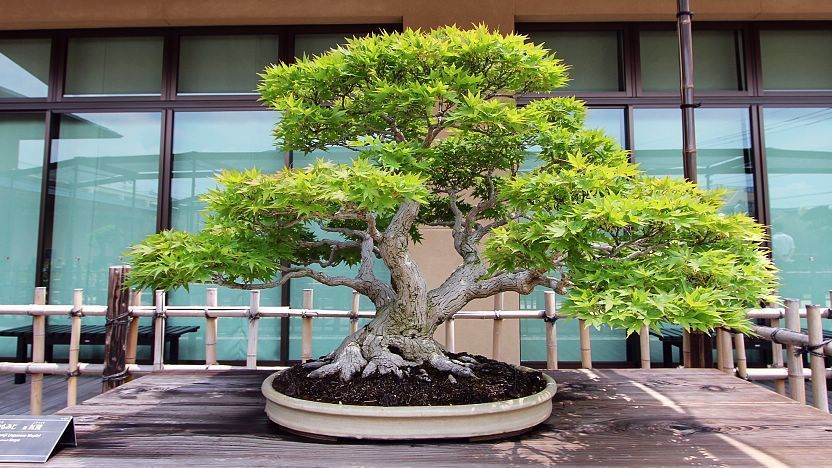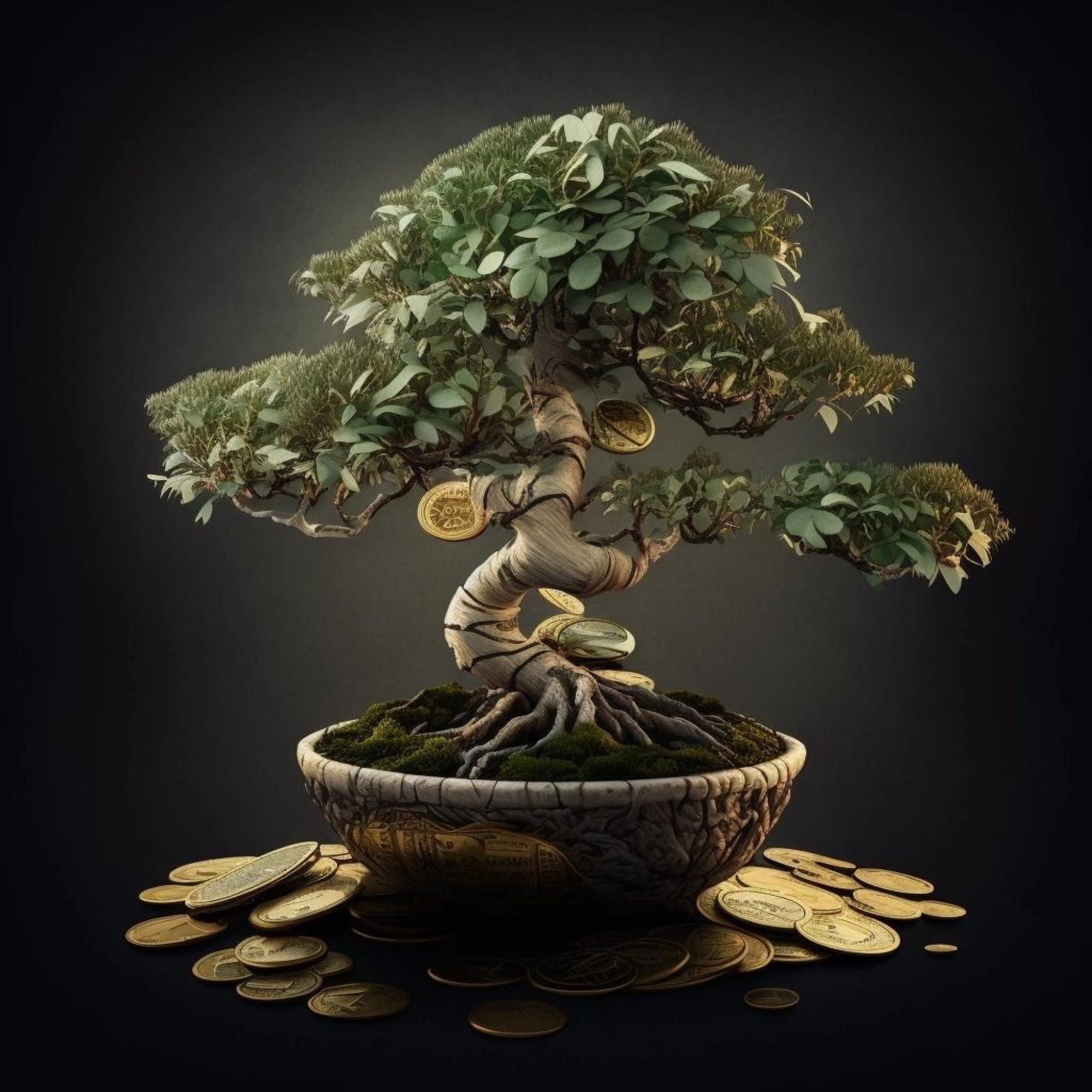Bonsai trees typically cost between $20 and $500. Prices vary based on species, age, and size.
Bonsai trees, known for their miniature size and artistic appeal, make for unique indoor plants. Their prices can range significantly, influenced by various factors. Younger and smaller bonsai trees are generally more affordable, while mature and larger specimens can be quite expensive.
Species also play a crucial role in determining the cost, with rare types fetching higher prices. Enthusiasts often invest in bonsai trees not just for their beauty but also for the meditative practice of caring for them. Whether you are a beginner or an experienced gardener, there is a bonsai tree that fits your budget and aesthetic preferences.
Introduction To Bonsai Pricing
Bonsai trees are miniature trees grown in containers. They are beautiful and artistic. But how much does a bonsai tree cost? This section will help you understand the pricing of bonsai trees.
What Influences Cost
Several factors affect the cost of bonsai trees:
- Species: Some species are more expensive.
- Age: Older trees usually cost more.
- Size: Larger bonsai trees have higher prices.
- Pot: Decorative pots add to the cost.
- Training: Well-trained trees are pricier.
Importance Of Budgeting
Setting a budget is crucial for buying bonsai trees. A budget helps you choose the right tree. It also prevents overspending. Here is a simple guide:
| Budget Range | Expected Quality |
|---|---|
| $10 – $50 | Young and small trees |
| $50 – $200 | Medium-sized and some training |
| $200 – $500 | Older trees with good training |
| $500+ | Rare species and expert training |
By understanding the cost factors and setting a budget, you can find the perfect bonsai tree.
Types Of Bonsai Trees
Bonsai trees come in various types, each with unique characteristics. This section explores common varieties and rare, exotic species. Discover which bonsai tree suits your taste and space.
Common Varieties
Common bonsai tree varieties are easy to find and care for. These trees are popular among both beginners and experts.
| Type | Description |
|---|---|
| Ficus | Known for its thick trunk and aerial roots. |
| Juniper | Features needle-like foliage and a rugged appearance. |
| Chinese Elm | Has small leaves and a graceful, curved trunk. |
| Jade | Succulent with thick, shiny leaves and a sturdy trunk. |
Rare And Exotic Species
Rare and exotic bonsai trees are highly sought after. They require more attention but offer unique beauty.
- Japanese Black Pine: Dark, rough bark and twisted needles.
- Azalea: Beautiful, vibrant flowers that bloom in spring.
- Maple: Stunning fall foliage with bright red and orange leaves.
- Cherry Blossom: Delicate pink flowers that signal the arrival of spring.
Choose a bonsai tree that fits your lifestyle and preferences. Both common and rare varieties offer endless beauty and joy.
Factors Affecting Bonsai Prices
Understanding the factors affecting bonsai prices is crucial for buyers. These factors play a significant role in determining how much you will pay for a bonsai tree. Below, we break down the key aspects that influence bonsai tree prices.
Age And Maturity
The age and maturity of a bonsai tree greatly affect its price. Older trees often cost more because they have been cared for over many years. A young bonsai tree, say 5 years old, might cost less. In contrast, a 50-year-old bonsai tree will have a higher price.
This is because older trees display more intricate bark and branch structures. They also embody a sense of history and artistry. Thus, mature bonsai trees are often priced higher due to their age and developed aesthetics.
Size And Shape
Size and shape also play a vital role in determining bonsai prices. Larger bonsai trees require more time and skill to cultivate. Therefore, they usually command higher prices. Smaller trees, while still valuable, are often more affordable.
The shape of the bonsai adds another layer to its value. Trees with unique shapes or those that follow traditional bonsai styles are often more expensive. For example, a bonsai with a windswept shape might be pricier than a simple upright one.
| Factor | Impact on Price |
|---|---|
| Age and Maturity | Older trees are more expensive. |
| Size and Shape | Larger and uniquely shaped trees cost more. |
Understanding these factors can help you make an informed purchase. Whether you are a beginner or a seasoned enthusiast, knowing what affects bonsai prices is essential.
Where To Buy Bonsai Trees
Buying a bonsai tree can be an exciting journey. Knowing where to purchase the right bonsai tree is crucial. There are two main places to explore: local nurseries and online stores.
Local Nurseries
Local nurseries offer a hands-on experience. You can see the bonsai trees in person. This helps you choose a healthy tree. Local nurseries often have experts. They can give you advice on care and maintenance. Supporting local businesses also boosts your community.
Online Stores
Online stores provide convenience and variety. You can shop from home. Many websites offer detailed descriptions and care instructions. Online reviews help you make informed decisions.
| Local Nurseries | Online Stores |
|---|---|
| Hands-on experience | Convenience of shopping from home |
| Expert advice | Wide variety of options |
| Support local businesses | Customer reviews and ratings |
Local nurseries often provide a more personal touch. You can ask questions directly. This ensures you select the right bonsai tree. On the other hand, online stores offer a vast selection. You may find rare species not available locally.
Both options have their pros and cons. It depends on your preference and needs. Whether you choose local nurseries or online stores, ensure you pick the best bonsai tree for you.
Cost Breakdown By Tree Type
Understanding the cost of a bonsai tree can be challenging. Prices vary based on tree type, age, and size. Below, we break down the costs by tree type to help you make an informed decision.
Beginner Trees
Beginner trees are ideal for those new to bonsai. They are often less expensive and require minimal care. Here are some common beginner trees and their average costs:
- Ficus Bonsai: $20 – $50
- Jade Bonsai: $25 – $60
- Juniper Bonsai: $30 – $70
Intermediate Trees
Intermediate trees are perfect for those with some experience. These trees often have unique characteristics and may require more care. Here’s a breakdown of their costs:
- Chinese Elm Bonsai: $50 – $100
- Maple Bonsai: $60 – $120
- Azalea Bonsai: $70 – $130
Advanced Trees
Advanced trees are for experienced bonsai enthusiasts. They are often older, more intricate, and require specialized care. The costs for these trees are higher:
- Black Pine Bonsai: $200 – $500
- Olive Bonsai: $250 – $600
- Japanese White Pine Bonsai: $300 – $700

Credit: www.craftsy.com
Additional Costs To Consider
Starting your bonsai tree journey is exciting. But, it’s important to understand that there are additional costs involved. These costs can vary depending on your tree’s species and your level of expertise. This section will help you understand the various expenses you might encounter.
Tools And Equipment
Having the right tools is crucial for bonsai care. A basic set of tools usually includes:
- Pruning shears
- Wire cutters
- Root rake
- Watering can
Pruning shears and wire cutters are essential for shaping your bonsai. Root rakes help in loosening the soil and untangling roots. A watering can with a fine nozzle ensures gentle watering. High-quality tools can range from $50 to $200.
Soil And Fertilizers
Bonsai trees need special soil. Regular garden soil won’t work. Bonsai soil mixes are essential for proper drainage and aeration. They can range from $10 to $30 per bag.
Fertilizers are another critical component. Bonsai trees need nutrients to grow strong and healthy. Organic or inorganic fertilizers can cost between $5 and $20 per bottle. You should fertilize your bonsai tree regularly, especially during the growing season.
Here is a quick breakdown of costs:
| Item | Estimated Cost |
|---|---|
| Basic Tool Set | $50 – $200 |
| Bonsai Soil | $10 – $30 per bag |
| Fertilizers | $5 – $20 per bottle |
Understanding these additional costs will help you budget effectively for your bonsai tree care.
Tips For Budget-friendly Bonsai Shopping
Finding the perfect bonsai tree doesn’t need to be expensive. With a few smart strategies, you can enjoy bonsai on a budget. Discover some tips to get the best deals on bonsai trees.
Seasonal Sales
Seasonal sales offer great opportunities for budget-friendly shopping. Retailers often discount bonsai trees during certain times of the year. Look for sales during spring and fall. These seasons are ideal for new plantings and transplants. Stores often clear out old stock to make room for new arrivals.
Take advantage of holiday sales. Christmas and New Year sales can provide significant savings. Keep an eye on gardening store promotions and online bonsai shops. Sign up for newsletters to get notified about upcoming sales.
Second-hand Options
Buying second-hand bonsai trees can save money. Check local classifieds for bonsai listings. Many enthusiasts sell their trees when they move or change hobbies. Online marketplaces like eBay and Craigslist are good places to search.
Visit local bonsai clubs or societies. Members often sell or trade their trees. You might find some real bargains. Look for garage sales and estate sales too. People sometimes sell bonsai trees at these events.

Credit: www.japan-guide.com
Long-term Investment
Investing in a bonsai tree can be rewarding over time. They offer unique beauty and can appreciate in value. Understanding the costs and potential returns is crucial.
Maintenance Costs
Maintaining a bonsai tree involves several ongoing expenses. Below is a breakdown:
- Watering: Regular watering is essential for bonsai health.
- Fertilizers: Specific fertilizers keep the tree nourished.
- Pruning Tools: High-quality tools are necessary for precise trimming.
- Repotting: Trees need repotting every 2-3 years.
These costs ensure the bonsai remains healthy and visually appealing.
Potential Value Appreciation
Bonsai trees can increase in value over time. Key factors include:
- Age: Older trees are often more valuable.
- Species: Rare species can command higher prices.
- Design: Well-designed trees are sought after by collectors.
- Condition: Healthy trees fetch better prices.
Investing time and care can lead to significant value appreciation.

Credit: bonsai-en.shop
Conclusion
Understanding bonsai tree costs helps in making informed decisions. Various factors influence prices, including species and age. Investing in a bonsai can be rewarding. Carefully consider your budget and needs before purchasing. Enjoy the unique beauty and tranquility a bonsai tree brings to your space.
Happy bonsai growing!

